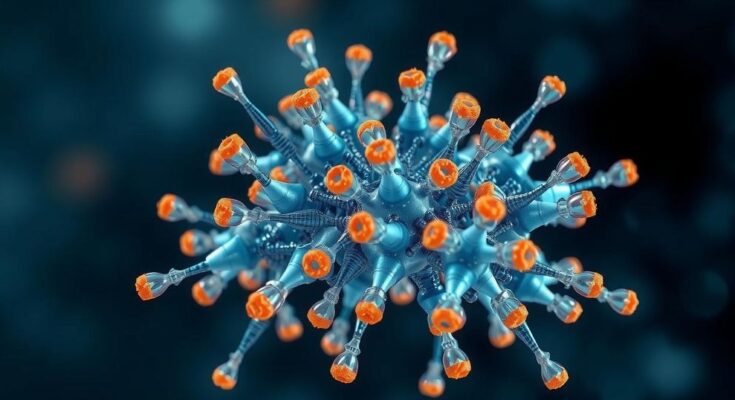Arizona State University researchers, led by Professor Petr Sulc, have advanced the field of self-assembly in nanotechnology by synthesizing a tiny crystal called pyrochlore. This research employs innovative simulation methods to predict and guide the self-assembly of molecules, enhancing potential applications in optics and diagnostics. The project emphasizes harnessing natural processes to develop complex nanodevices with transformative capabilities.
Nature showcases a mesmerizing array of complex structures that form through self-assembly, a phenomenon where simple components unite to create intricate designs. Researchers aim to unravel these processes, leveraging them for advancements in fields like computer science and medical diagnostics. At Arizona State University, Professor Petr Sulc and his team have progressed toward mimicking this natural mechanism, synthesizing a tiny crystal named “pyrochlore” with remarkable optical qualities. The research hinges on a novel simulation technique that anticipates and steers the self-assembly process, ensuring molecules align precisely without forming unintended structures. This breakthrough lays the foundation for crafting sophisticated devices at the nanoscale, comparable to the size of a single virus. The pyrochlore nanocrystal, an engineered lattice, holds potential to act as an optical metamaterial, capable of selectively transmitting wavelengths of light. This innovative material offers exciting possibilities, including the development of optical computers and enhanced detectors across various applications. Sulc, affiliated with prominent centers at ASU, explores how biological systems, unlike inert objects, can spontaneously assemble functional nanostructures by navigating chaotic environments. In contrast to machines meticulously assembled, biological entities like viruses and bacteria craft clever nanomachines through random molecular interactions. These structures, spanning just nanometers, form by self-assembly, as evolved processes guide molecules to collaborate effectively, crafting robust complexes that perform essential cellular functions. Advancements in bionanotechnology have seen scientists emulate nature’s techniques in labs, utilizing simple strategies like mixing molecular components in water. Particularly, DNA bionanotechnology stands out by employing specially designed DNA strands that create intricate 3D shapes, yielding promising applications in diagnostics and innovative therapies, including vaccine delivery. Nevertheless, constructing specific nanostructures remains a challenge due to the unpredictability of molecular interactions leading to kinetic traps. To mitigate this, Sulc’s team developed advanced statistical models that can simulate and identify problems in self-assembly, refining controls over molecular interactions to achieve precise outcomes. Their strategy contrasts traditional approaches by grouping thousands of DNA components into single entities, thus simplifying the complex simulations necessary for understanding and designing self-assembled structures. As this research evolves, it paves the way for more sophisticated materials and nanodevices, lending itself to transformative applications in healthcare and beyond. Collaborative efforts with various universities have been instrumental in this project, showcasing the collective ambition to harness the magic of self-assembly for technological innovations. As we stand on the brink of a new era in nanotechnology, the intricate dance of molecules promises to revolutionize how we interact with the microscopic fabric of our world.
The article discusses the intriguing field of self-assembly in nanotechnology, where scientists seek to replicate nature’s ability to create complex structures from simple parts. Biological systems already exhibit sophisticated self-assembly processes, paving the way for technological advancements in various scientific disciplines. This research notably focuses on Arizona State University’s exploration of synthetic nanocrystals and the development of innovative simulation methods to enhance the self-assembly processes.
This groundbreaking research reveals profound insights into the principles of self-assembly and its potential to innovate nanotechnology. With new simulation techniques paving the way for engineered structures like pyrochlore nanocrystals, the future holds vast possibilities for applications in optical computing and healthcare solutions. As researchers continue to unravel the complexities of molecular interactions, the marriage of biology and technology promises to transform our understanding and capabilities at the nanoscale.
Original Source: news.asu.edu



